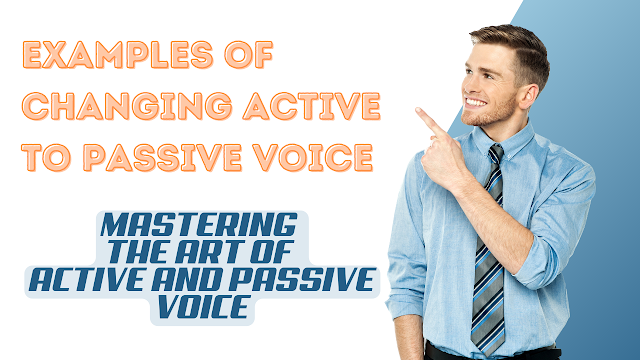Exploring "General Types of Sentences" and "Be" Forms: The Art of Effective Communication
 |
| Unlocking the Language of Expression: An Introduction to General Types of Sentences 📝🗣️ |
Introduction
Language is a bridge that connects us to the world, allowing us to express thoughts, feelings, and ideas. At the heart of this linguistic universe are general types of sentences and the versatile "be" forms. These linguistic tools are the keys of clear and effective communication.
In this comprehensive exploration, we will understand the usage of general types of sentences, look into the significance of "be" forms, and uncover how their synergy shapes the way we express ourselves and understand others.
Table of Contents
- Understanding Sentence Types
- The Role of Clarity in Communication
- The Landscape of Everyday Sentences
- Introduction to Auxiliary Verbs
- The Fab Five: Am, Is, Are, Was, Were
- Constructing Statements with "Be" Forms
- The Assertive Sentence: Stating Facts and Opinions
- The Interrogative Sentence: Asking Questions
- The Imperative Sentence: Giving Commands
- The Exclamatory Sentence: Expressing Strong Emotions
- The Power of Conciseness
- Crafting Precise and Engaging Sentences
- The Subtle Nuances of Emphasis
- Subject-Verb Agreement with "Be" Forms
- Navigating Singular and Plural Situations
- Ensuring Correct Tense Usage
- Showcasing Sentence Types in Action
- Illuminating the Role of "Be" Forms in Various Statements
- Practicing the Art of Crafting Sentences
- Embracing Confidence in Using "Be" Forms
- Building Effective Communication Habits
Decoding General Types of Sentences: A Linguistic Spectrum
Understanding Sentence Types
Sentences are the building blocks of language. They serve as vehicles to convey ideas and information. In the realm of sentence structure, we encounter various types, each with its unique purpose and characteristics. Understanding these types enables us to convey our thoughts effectively.
The Role of Clarity in Communication
Clarity is most important in communication. General types of sentences simplify the complex process of conveying information. They enable us to express our thoughts clearly, allowing the listener or reader to grasp our intended meaning swiftly.
The Landscape of Everyday Sentences
Everyday communication is rich and diverse. From making straightforward statements to asking questions, giving commands, and expressing emotions, we navigate a vast landscape of sentence types. Mastery of these forms empowers us to navigate this linguistic terrain with ease.
Mastering "Be" Forms: The Verbal Chameleons
Introduction to Auxiliary Verbs
"Be" forms, a subset of auxiliary verbs, are the linguistic chameleons of sentence construction. These verbs, including am, is, are, was, and were, play a crucial role in shaping sentences by indicating the state of being or existence. They are the threads that weave the fabric of our statements.
The Fab Five: Am, Is, Are, Was, Were...
Verb Forms Table
Verb Forms
Verb
Usage
Example
Am
First person singular present tense
"I am a writer."
Paired with the pronoun "I"
Is
Third person singular present tense
"She is a scientist."
Aligned with "he," "she," "it," and singular nouns
Are
Present tense for multiple subjects
"They are athletes."
Coupled with "you," "we," "they," and plural nouns
Was
Past tense for singular subjects
"He was at the party."
Employed with "I," "he," "she," "it," and singular nouns
Were
Past tense for multiple subjects
"We were in the garden."
Teamed up with "you," "we," "they," and plural nouns
Constructing Statements with "Be" Forms
Creating sentences with "be" forms is straightforward. Begin with a subject, incorporate the appropriate "be" form, and provide additional information. For instance, "The sky is clear," or "They were excited."
The Versatility of "Be" Forms in Different Sentence Types
The Assertive Sentence: Stating Facts and Opinions
The assertive sentence, the most common type, is used to make statements, express opinions, and present facts. "Be" forms play a crucial role in assertive sentences by conveying information in a clear and concise manner. For example, "She is a skilled pianist."
The Interrogative Sentence: Asking Questions
Interrogative sentences are question-forming sentences that seek information. "Be" forms are instrumental in constructing questions, facilitating effective communication. For instance, "Is he a doctor?" or "Were they at the meeting?"
The Imperative Sentence: Giving Commands
Imperative sentences are used to give commands, instructions, or requests. While they often don't contain a subject, "be" forms are employed in some imperative sentences to convey a sense of urgency or importance. For example, "Be quiet during the presentation."
Exclamatory sentences convey strong emotions or exclamations. "Be" forms enhance the expression of emotions in these sentences, adding depth to the sentiment being expressed. For instance, "How beautiful the sunset is!"
Creating Impactful Statements with "Be" Forms
The Power of Conciseness
General sentences, with the aid of "be" forms, are inherently concise. They distill complex ideas into straightforward statements, making them powerful tools for effective communication, especially when brevity is key.
Crafting Precise and Engaging Sentences
"Be" forms are instrumental in crafting precise and engaging sentences. They help convey information clearly, allowing readers or listeners to follow your narrative or argument with ease. This precision enhances comprehension and retention of the information presented.
The Subtle Nuances of Emphasis
"Be" forms also introduce subtle nuances of emphasis. By choosing the appropriate "be" form, you can emphasize certain aspects of your statement, directing the reader or listener's attention to specific details. For example, "She is indeed talented" emphasizes her talent.
Common Errors and How to Steer Clear
Subject-Verb Agreement with "Be" Forms
A common error to avoid is failing to ensure subject-verb agreement when using "be" forms. It's crucial to match the "be" form with the correct subject, whether singular or plural. For instance, "The book is" (singular) versus "The books are" (plural).
Navigating Singular and Plural Situations
Navigate singular and plural situations with precision. "Was" is used with "I," "he," "she," "it," and singular nouns, while "were" is used with "you," "we," "they," and plural nouns. For example, "She was" (singular) versus "They were" (plural).
Ensuring Correct Tense Usage
Maintain consistency in tense usage. When discussing the present, use the appropriate present tense "be" form ("am," "is," "are"). When discussing the past, employ the relevant past tense "be" form ("was," "were").
Examples of General Sentence Types and "Be" Forms
Showcasing Sentence Types in Action
Illuminating the Role of "Be" Forms in Various Statements
Enhancing Your Communication Prowess
Practicing the Art of Crafting Sentences
Engage in exercises that involve crafting different types of sentences. Practice forming assertive, interrogative, imperative, and exclamatory sentences using "be" forms to enhance your sentence construction skills.
Embracing Confidence in Using "Be" Forms
As you grow more comfortable with "be" forms, integrate them seamlessly into your communication. Use them to articulate thoughts, ask questions, give commands, and express emotions with confidence.
Building Effective Communication Habits
Cultivate effective communication habits by consistently incorporating general sentence types and "be" forms into your interactions. This practice will not only refine your communication skills but also enable you to convey ideas more clearly.
Conclusion
- General sentence types, in conjunction with "be" forms, form the backbone of our linguistic expression.
- By mastering the nuances of sentence types and skillfully employing "be" forms, we wield the tools necessary to communicate with precision, clarity, and impact.
- Whether stating facts, asking questions, giving commands, or expressing emotions, these linguistic tools empower us to navigate the intricacies of human interaction.






No comments:
Post a Comment